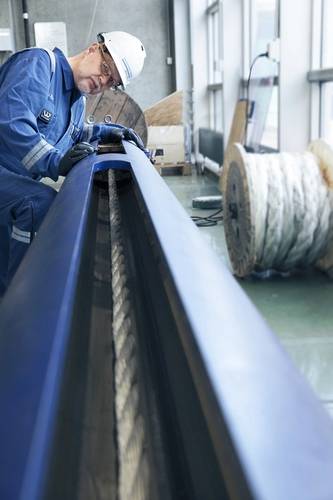The results of two DNV GL led joint industry projects (JIPs) and a JIP pre-study commissioned by Statoil are now captured in a new Recommended Practice (RP) on offshore fiber ropes. With a system perspective on mooring performance, DNVGL-RP-E305 provides new industry guidance for achieving cost reductions of overall mooring operations, by addressing the engineering, manufacture and integration of offshore fiber ropes.
The offshore oil and gas industry uses synthetic fiber ropes across various mission-critical activities where performance and reliability are key concerns. These include mooring systems, lifting slings and deepwater deployment and recovery systems for subsea infrastructure.
“Fiber ropes are increasingly used for offshore operations due to their high performance for a very low weight and because they can be easily customized. Their functionality is critical to ensuring successful offshore operations,” said Vidar Åhjem, principal engineer, DNV GL - Oil & Gas. “Performance-based selection of the mooring lines, lifting lines, slings and tethers, renders these offshore systems highly cost effective.”
Lifting lines are used for the installation of subsea infrastructure, where the offshore fiber rope performs as an integral part of a lifting appliance and where no function can be seen in isolation. The integrated system behavior is also very important in offshore mooring.
DNV GL said the RP is intended to serve owners, system integrators, rope manufacturers, manufacturers of load-bearing synthetic yarns and coating and termination hardware products. It provides recommendations for fulfilling the requirements in the Standard DNVGL-OS-E303. It emphasizes the following key aspects:
- Offshore Fiber Rope should be analyzed on the basis of amount of load-bearing material in the cross section, and the characteristics of the material used
- The tension versus stretch behavior of synthetic rope, which is fundamentally different to that of steel wire rope
- The strength and endurance of synthetic rope, which is fundamentally different to the strength and endurance of steel-wire rope on the basis that mechanisms are different
“The technical advice provided to the offshore mooring industry in this RP help assure that the design, fabrication and installation of cost-efficient, tailor-made fiber rope based mooring systems will meet the functional requirements,” said Espen Cramer, global service area leader for technical advisory, DNV GL - Oil & Gas. “DNVGL-RP-E305 will be part of more than 170 recognized industry standards and recommended practices that are openly accessible for the industry from our home page, ensuring cost-efficient, reliable and safe solutions.”




















